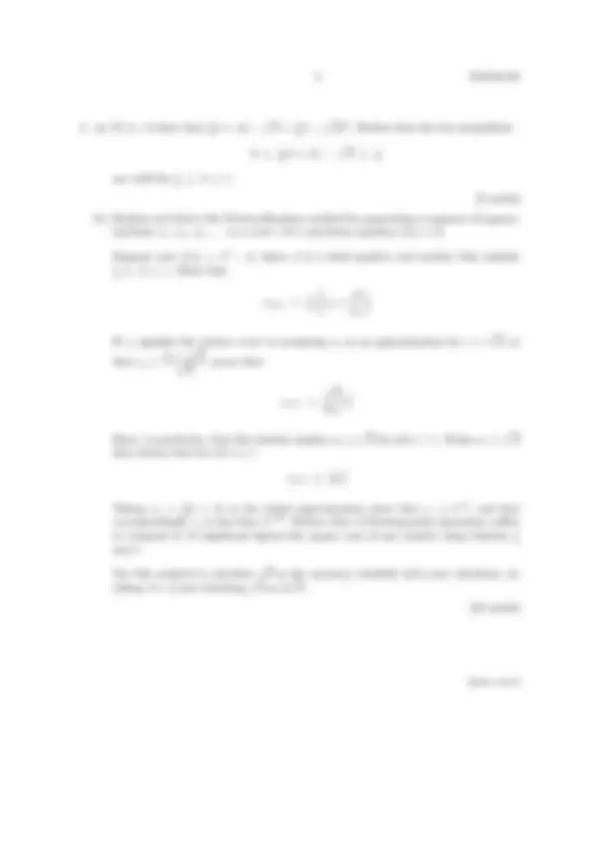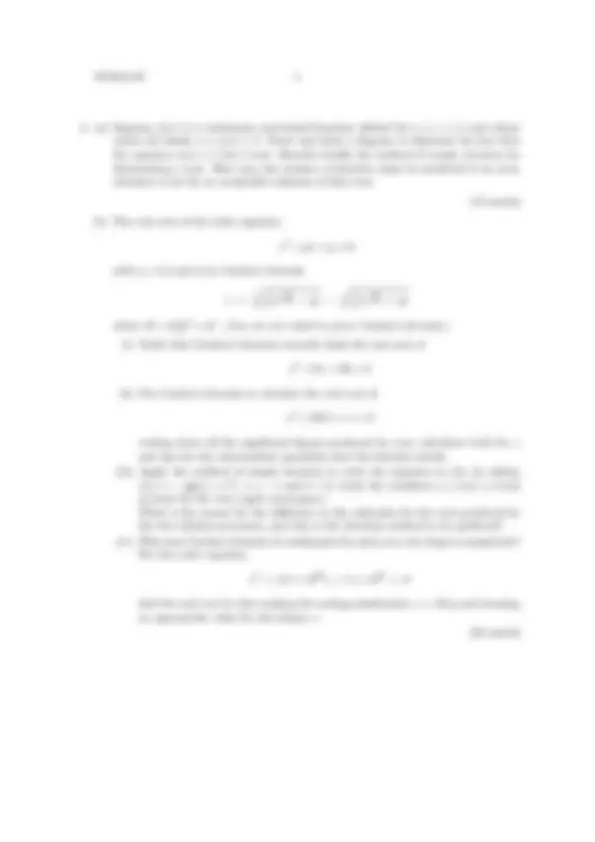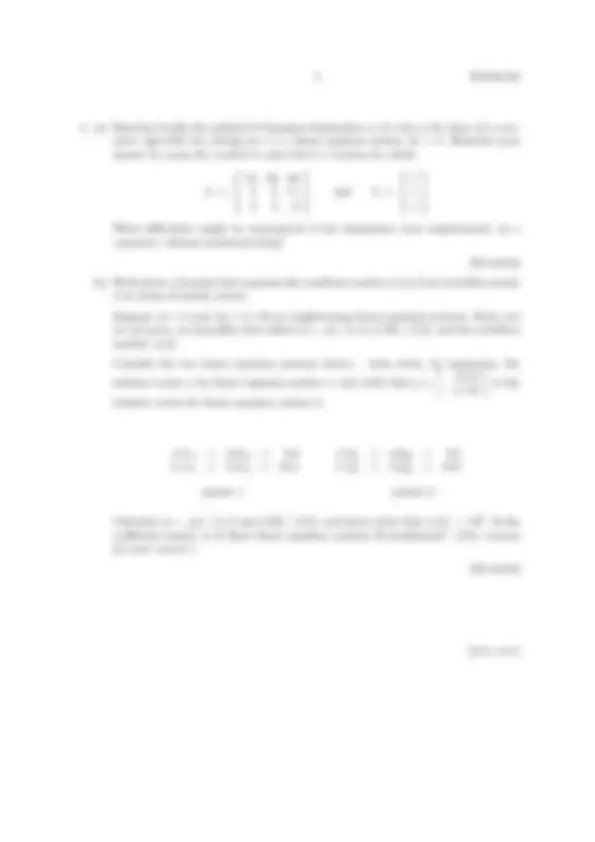





Study with the several resources on Docsity

Earn points by helping other students or get them with a premium plan


Prepare for your exams
Study with the several resources on Docsity

Earn points to download
Earn points by helping other students or get them with a premium plan
Community
Ask the community for help and clear up your study doubts
Discover the best universities in your country according to Docsity users
Free resources
Download our free guides on studying techniques, anxiety management strategies, and thesis advice from Docsity tutors
The questions and instructions for a stage 2 computational mathematics exam held at the university of kent in may 2004. The exam covers topics such as bisection method, newton-raphson method, gaussian elimination, and numerical integration. Students are required to solve problems involving roots, ill-conditioned problems, and linear equation systems.
Typology: Study notes
1 / 6

This page cannot be seen from the preview
Don't miss anything!




Saturday, 29th May 2004: 9.30 a.m. to 11.30 a.m. This paper contains FIVE questions. Candidates should not attempt more than THREE questions. Each question will be marked out of 40. Approved calculators are permitted.
I =
0
√1 + ex (^) dx
when the range of integration from 0 to 1 is divided into n parts, then T 4 = 1. 643885098 T 8 = 1. 642513170 T 16 = 1. 642170132 Use this data to construct a portion of the Romberg array associated with the integral I, and write down the best estimate for the value of I that you can. [10 marks]
(^12) {√R − q} − 3
(^12) {√R + q} where R = 4( p 3 )^3 + q^2. (You are not asked to prove Cardan’s formula.) (i) Verify that Cardan’s formula correctly finds the real root of x^3 + 9x + 26 = 0 (ii) Use Cardan’s formula to calculate the real root of x^3 + 987x + 1 = 0 writing down all the significant figures produced by your calculator both for x and also for key intermediate quantities that the formula entails. (iii) Apply the method of simple iteration to solve the equation in (ii), by taking φ(x) = − 9871 (1 + x^3 ), a = −1 and b = 0; verify the condition a ≤ φ(x) ≤ b and account for the very rapid convergence. What is the reason for the difference in the estimates for the root produced by the two solution processes, and why is the iteration method to be preferred? (iv) Why may Cardan’s formula be inadequate if p and q are very large in magnitude? For the cubic equation x^3 + 3. 5 × 1035 x + 5 × 1050 = 0 find the real root by first making the scaling substitution x = 10sy and choosing an appropriate value for the integer s. [28 marks]
A =
(^) and b =
What difficulties might be encountered if the elimination were implemented, on a computer, without partial pivoting? [20 marks] (b) Write down a formula that expresses the condition number κ(A) of an invertible matrix A in terms of matrix norms. Suppose Ax = b and Ay = b + δb are neighbouring linear equation systems. State, but do not prove, an inequality that relates ‖ x − y ‖ / ‖ x ‖, ‖ δb ‖ / ‖ b ‖, and the condition number κ(A). Consider the two linear equation systems shown : write down, by inspection, the solution vector x for linear equation system 1, and verify that y =
is the solution vector for linear equation system 2.
7 x 1 + 4. 9 x 2 = 9. 6
1 x 1 + 5. 3 x 2 = 10. 4
7 y 1 + 4. 9 y 2 = 9. 5
1 y 1 + 5. 3 y 2 = 10. 5 system 1 system 2 Calculate ‖ x − y ‖ / ‖ x ‖ and ‖ δb ‖ / ‖ b ‖, and hence show that κ(A) > 103. Is the coefficient matrix A of these linear equation systems ill-conditioned? (Give reasons for your answer.) [20 marks]
[turn over ]